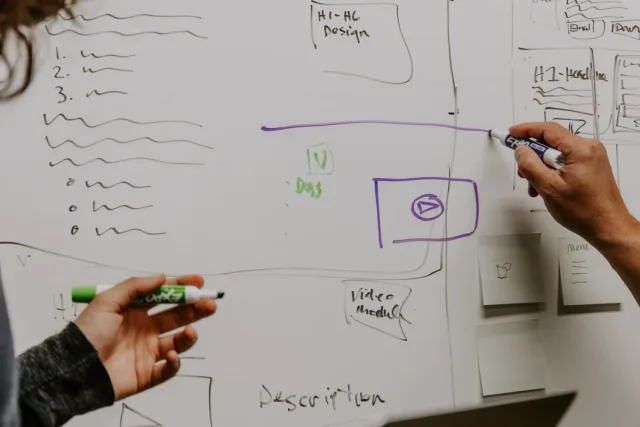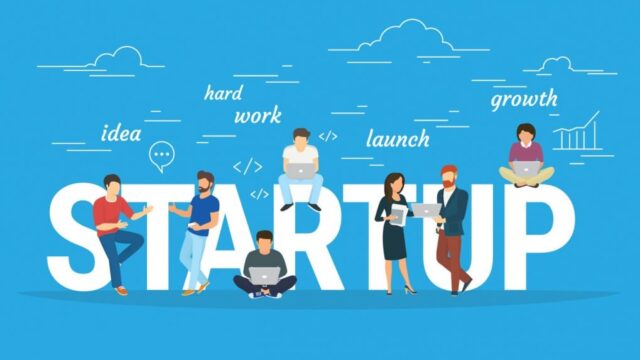
During the last decade, Minimum Viable Product, MVP for short, has become a valuable part of startup development. It helps young companies overcome market problems, avoid failure, and find their place in the market and their clients.
In this article, you will find out what it takes to develop a successful and useful MVP.
Brainstorm Your Startup Idea

It is important to mention that MVP is not a prototype of a product, and it is not a beta version. The difference between these terms is significant; a prototype is the first version of a product, which usually has a narrow usage. Beta version is a pre-launch product, which is tested to identify potential internal problems, run through how the software works in general. MVP is the after-prototype stage, a product with minimal functions required to validate a company’s assumptions and market hypotheses.
Before starting to work on an MVP, you have to:
- Define a clear vision of the project’s idea and its assumed audience;
- Think of unique features and core functions of a startup that will be implemented to validate demand for an idea;
- Hire members of a team you need to turn an idea into reality — managers, developers, etc.
Steps of MVP Development

As mentioned before, there are certain aspects that a company needs to take care of before launching MVP. One of the most important is finding a development team. A company can hire in-house developers, but it takes a lot of time, finances, and effort to train them. That is why cooperating with a remote dedicated development team can be a more practical decision — especially if you’re an early-stage startup. Purrweb is a great option in this case: they provide you with business and technical expertise, and their product teams are ready for the user validation cycles that usually follow MVP development.
There is another important issue a company has to solve. A team should answer a question – “What is a successful MVP for them?”. You can measure success based on the number of downloads, percentage of active users, general monthly profit, or other KPIs (Key Performance Indicators) you’ve defined.
A company can also determine its way to gain profit from MVP or to find out if users are willing to pay. Here are several options to choose from:
- Fake door test. LP that leads a user to purchase your MVP just to redirect them to the page with apologies and a proposition to join your mailing list to be notified about MVP release.
- Pre-order. Users pay for an MVP to use it after its release.
- Free trial. An MVP is free for the first, for instance, seven days, and then the user either subscribes or drops off.
- Paid app. The user pays for an MVP before downloading it.
No matter who develops an MVP — in-house product team, freelance developers, or a development company, there are still questions that a startup team must answer. All of them can be divided into specific steps.
Answer The Questions – What Kind of Problem Does Your Startup Solve?

Every business has a purpose. It strongly affects future customers, users, potential profits, platforms to launch the product on, further marketing plans, etc.
According to CB Insights’ research, around 40% of startups fail every year because they don’t meet market needs or solve problems people face. That is why finding a purpose, a challenge to address is vital for a startup’s survival and MVP’s success. An Uber case is a bright example of problem-solving. In 2010, the taxi prices were incredibly high for day-to-day rides, and Uber became a solution, letting people order a cab for less money than using taxi agencies’ services cost.
Define The Target Audience

So, a company must decide what kind of people it works for — what people will use MVP. Here are some tips on how to do this:
- Use a pains—gains—jobs-to-be-done approach to define the customer segment: find out what pains your customers have, what gains will they receive after they start to use your product, and how your product will help them to achieve their goals.
- Study the market segment a startup will operate within (mass market, specific niche, business verticals, etc.);
- Analyze your competitors’ clients;
A company has to determine a target audience before MVP’s development — MVP tests will show if you’ve hypothesized correctly; if these people really do need your product.
Check Who Are Competitors

The same CB Insights research says over 25% of startups admit that they failed because of competition.
Know your competitors and use their experience to become better. Who are they, and what do they do to gain more customers and keep the old ones? Get a better understanding of them:
- Check competitors’ public data. Usually, it is released every quarter and at the end of the year. It may include financial information, like indicators, profit, number of customers, etc. For more insights on competitors, use LinkedIn, Crunchbase, PitchBook, etc;
- Follow your competitors on social media. It can provide an understanding of how competitors engage new customers through the Internet;
- Try your competitors’ products, so a project team could find out exactly how your product differs from theirs and what to improve or change to improve.
What features will you include in the MVP?
To decide which features to include, the company can use a special feature prioritization scheme. Here is what it looks like for an online shop application, for instance:
| The group of features | The meaning | Examples |
| Must have | These are core features that define the startup. They deliver the unique value of a project to a potential customer | List of products/services, registration form, checkout, different payment options. The unique value of a project might be a focus on an underserved audience or niche, manually verified vendors. |
| Should have | Represents functions and services that are important for a project, but may require further development after MVP launch | Forms for reviews, notifications on new goods/services and promotions |
| Would be nice to have | These are features that make an MVP more useful for customers but are not primarily important for the early stages of your business | Registration using Google +, or social media accounts, forums to discuss goods, interactive video reviews, etc. |
What Will The Success Criteria Be?
It is impossible to understand how successful MVP is if there are no criteria to evaluate success. Here are some major factors that can help measure MVP’s success:
- Download rate;
- Number of users per a certain period;
- Percentage of users who pay or attempt to pay for an MVP;
- Position in stores if an MVP is released on mobile devices (Google Market, App Store, etc.);
- MVP’s user ratings,
There are more criteria to consider, but they depend on the vertical a product exists in and the business model you’ve chosen for it.












